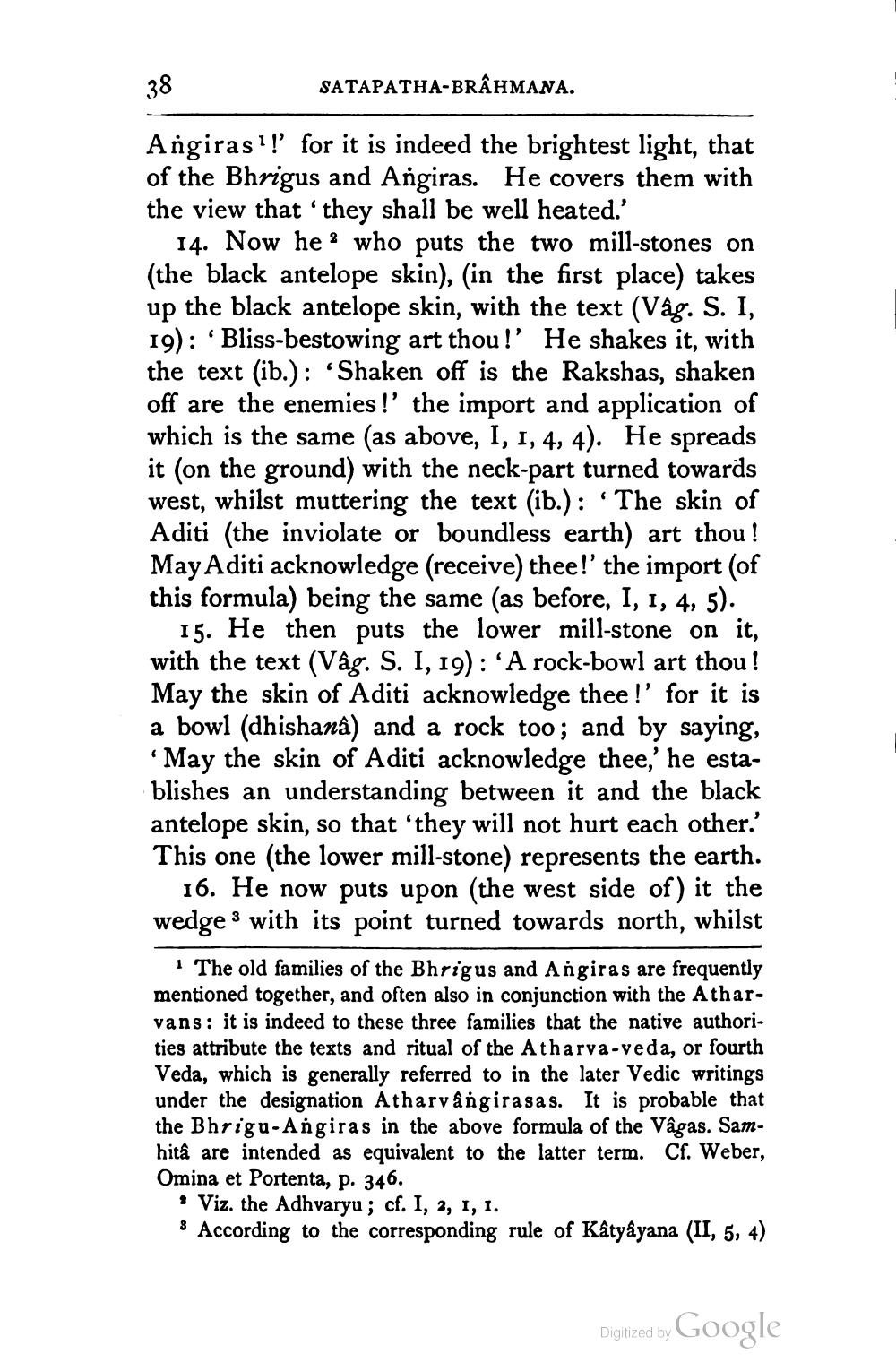________________
38
SATAPATHA-BRÂHMANA.
Angiras ?!' for it is indeed the brightest light, that of the Bhrigus and Angiras. He covers them with the view that they shall be well heated.'
14. Now he ? who puts the two mill-stones on (the black antelope skin), (in the first place) takes up the black antelope skin, with the text (Vág. S. I, 19): Bliss-bestowing art thou!' He shakes it, with the text (ib.): 'Shaken off is the Rakshas, shaken off are the enemies !' the import and application of which is the same (as above, I, 1, 4, 4). He spreads it (on the ground) with the neck-part turned towards west, whilst muttering the text (ib.): "The skin of Aditi (the inviolate or boundless earth) art thou ! May Aditi acknowledge (receive) thee!' the import (of this formula) being the same (as before, I, 1, 4, 5).
15. He then puts the lower mill-stone on it, with the text (Vág. S. I, 19): 'A rock-bowl art thou ! May the skin of Aditi acknowledge thee!' for it is a bowl (dhishana) and a rock too; and by saying,
May the skin of Aditi acknowledge thee,' he establishes an understanding between it and the black antelope skin, so that 'they will not hurt each other.' This one (the lower mill-stone) represents the earth.
16. He now puts upon (the west side of) it the wedges with its point turned towards north, whilst
1 The old families of the Bhrigus and Angiras are frequently mentioned together, and often also in conjunction with the Atharvans: it is indeed to these three families that the native authorities attribute the texts and ritual of the Atharva-veda, or fourth Veda, which is generally referred to in the later Vedic writings under the designation Atharvangirasas. It is probable that the Bhrigu-Angiras in the above formula of the Vâgas. Samhità are intended as equivalent to the latter term. Cf. Weber, Omina et Portenta, p. 346.
• Viz. the Adhvaryu ; cf. I, 2, 1, 1. 3 According to the corresponding rule of Kâtyâyana (II, 5, 4)
Digitized by Google




